Mangrove Monitor
- March 8, 2024
- 0 comment
The mangrove monitor, scientifically known as Varanus indicus, is a fascinating reptile found primarily in the mangrove forests and coastal regions of Southeast Asia, northern Australia, and the Pacific Islands. This sleek and agile lizard is renowned for its distinctive appearance, featuring a slender body, long tail, and powerful limbs. With its dark brown or black coloration adorned with yellow or white bands or spots, the mangrove monitor blends seamlessly into its mangrove habitat, making it a stealthy predator. These monitors are solitary creatures, spending their days basking in the sun or hunting for prey along the water’s edge.
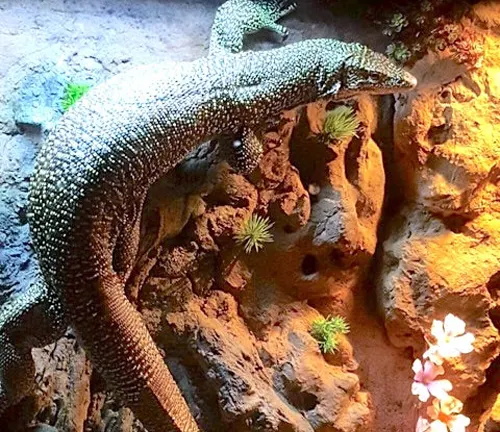
They are skilled climbers and swimmers, navigating the complex network of roots and branches with ease. As opportunistic predators, mangrove monitors feed on a variety of small animals, including fish, crustaceans, insects, and small mammals. Their importance in the ecosystem as apex predators cannot be overstated, as they help maintain ecological balance by controlling populations of prey species. However, like many reptiles, mangrove monitors face threats from habitat loss, pollution, and poaching. Efforts to conserve these fascinating creatures include habitat preservation, captive breeding programs, and public education initiatives. Understanding and appreciating the mangrove monitor’s role in its natural habitat is crucial for ensuring its survival for future generations to enjoy.
| Specification | Description |
|---|---|
| Scientific Name | Varanus indicus |
| Common Name | Mangrove Monitor |
| Habitat | Mangrove forests, coastal regions, estuaries |
| Distribution | Southeast Asia, northern Australia, Pacific Islands |
| Body Length | Up to 4 feet (1.2 meters) |
| Coloration | Dark brown or black with yellow or white bands/spots |
| Behavior | Solitary, diurnal (active during the day) |
| Diet | Fish, crustaceans, insects, small mammals |
| Predatory Behavior | Opportunistic predator, skilled climber and swimmer |
| Conservation Status | Not endangered, faces threats from habitat loss, poaching |
| Importance | Apex predator, maintains ecological balance |
Nature’s Stealthy Lizard

Mangrove monitors, scientifically known as Varanus indicus, are fascinating reptiles that inhabit the mangrove forests and coastal regions of Southeast Asia, northern Australia, and the Pacific Islands. These sleek, agile lizards are renowned for their distinctive appearance and intriguing behaviors, making them a subject of interest for both scientists and reptile enthusiasts alike.
Habitat and Distribution
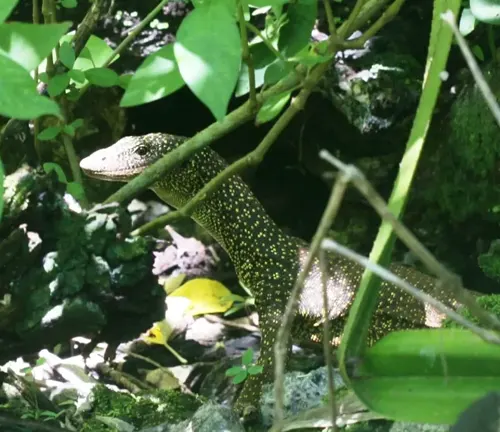
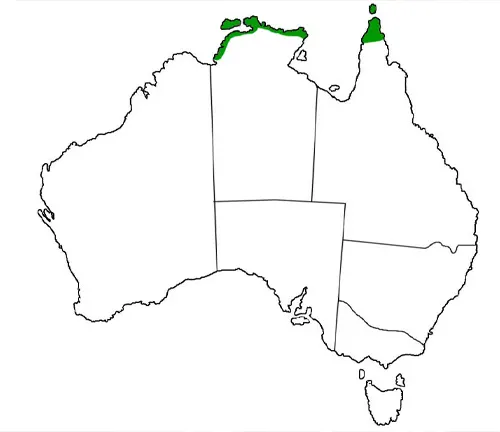
Mangrove monitors, are primarily found in mangrove forests and coastal regions throughout Southeast Asia, northern Australia, and the Pacific Islands. Their habitat preference for mangrove ecosystems is reflected in their common name.
Mangrove forests provide an ideal environment for these reptiles, offering a unique blend of terrestrial and aquatic habitats characterized by muddy substrates, brackish water, and dense vegetation. Mangrove monitors are well adapted to this challenging environment, utilizing their climbing and swimming abilities to navigate through the labyrinth of mangrove roots and branches.
Their distribution within mangrove habitats can vary depending on factors such as temperature, humidity, prey availability, and habitat structure. Mangrove monitors are often found near water sources such as estuaries, tidal creeks, and coastal lagoons, where they can hunt for prey and regulate their body temperature by basking in the sun or seeking refuge in the shade.
Physical Characteristics
These monitors are characterized by their slender bodies, long tails, and powerful limbs. They typically exhibit a dark brown or black coloration with yellow or white bands or spots along their bodies, providing effective camouflage in their mangrove habitat.
Size
Mangrove monitors are impressive reptiles in terms of size. Adults can grow to be quite large, with lengths ranging from three to four feet on average. However, some individuals have been known to reach lengths of up to five feet in exceptional cases. Males typically tend to be larger than females, showcasing the sexual dimorphism commonly observed in many reptile species. This substantial size makes mangrove monitors formidable predators in their natural habitat, allowing them to prey upon a wide variety of animals ranging from insects and crustaceans to small mammals and birds.
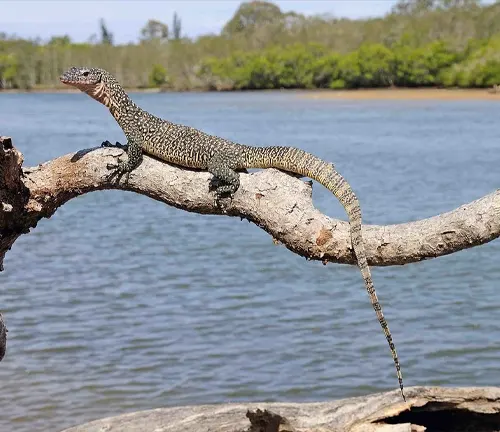
Behavior and Lifestyle
Mangrove monitors are solitary creatures, often spending their days basking in the sun or foraging for food along the water’s edge. They are primarily diurnal, meaning they are active during the day, but they may also exhibit nocturnal behavior in certain conditions.
Hunting
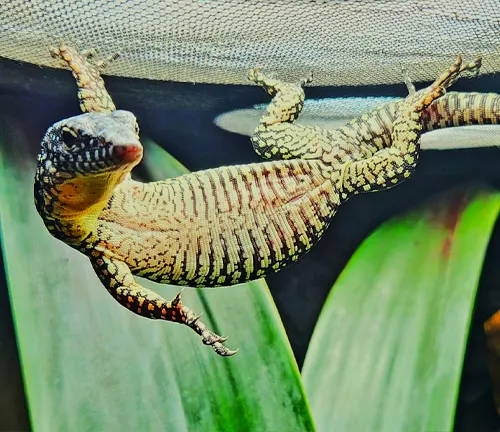
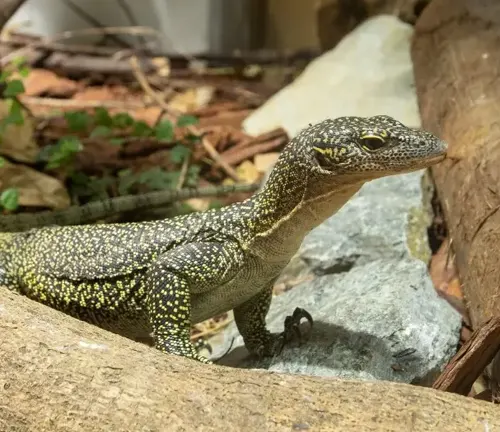
Hunting is a fundamental aspect of the behavior and lifestyle of mangrove monitors. These reptiles are opportunistic predators, meaning they will seize any chance to capture prey that crosses their path. Their hunting strategy is characterized by stealth and patience. Mangrove monitors possess keen senses of sight, smell, and hearing, which they rely on to detect potential prey items. They are diurnal creatures, primarily active during the day, although they may exhibit some nocturnal behavior in certain circumstances. When hunting, mangrove monitors utilize their agility and speed to stalk and ambush their prey. They are skilled climbers and swimmers, enabling them to navigate their mangrove habitat with ease in pursuit of food. Their diet consists of a diverse range of animals, including fish, crustaceans, insects, amphibians, reptiles, and small mammals. Mangrove monitors employ various hunting techniques depending on the type of prey they are targeting. Whether scavenging along the water’s edge, searching through leaf litter, or climbing trees in search of bird nests, these resourceful predators adapt their hunting strategies to maximize their chances of success. Once they have located their prey, mangrove monitors use their sharp claws and powerful jaws to capture and subdue it before consuming it whole or tearing it into smaller pieces. Hunting plays a crucial role in the survival and ecological balance of mangrove monitors, allowing them to obtain the necessary nutrients to thrive in their natural environment.
Diet and Feeding Habits
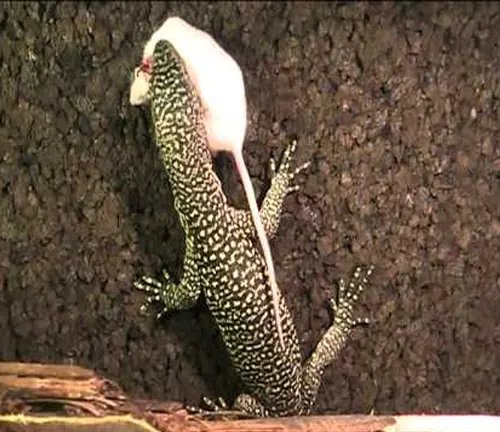

Mangrove monitors are carnivorous reptiles with a diverse diet consisting of various prey items found within their habitat. Their feeding habits are characterized by opportunism and adaptability, allowing them to consume a wide range of animals to meet their nutritional needs.
In their natural environment, mangrove monitors primarily prey on small vertebrates and invertebrates. This includes fish, crustaceans, insects, amphibians, reptiles, and small mammals. Their diet may also include bird eggs and nestlings, providing an additional source of protein and nutrients.
These monitors are skilled hunters, employing a combination of stealth, agility, and patience to capture their prey. They use their keen senses of sight, smell, and hearing to detect potential food sources, often stalking and ambushing their prey before delivering a swift strike with their sharp claws and powerful jaws.
Mangrove monitors are also known to scavenge for food, opportunistically feeding on carcasses and carrion when the opportunity arises. This scavenging behavior allows them to capitalize on available resources and supplement their diet during times of scarcity.
Reproduction and Life Cycle
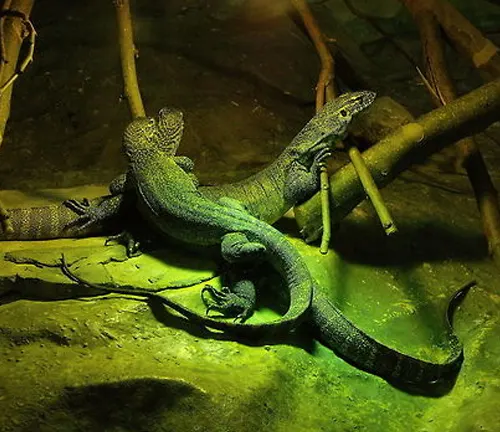
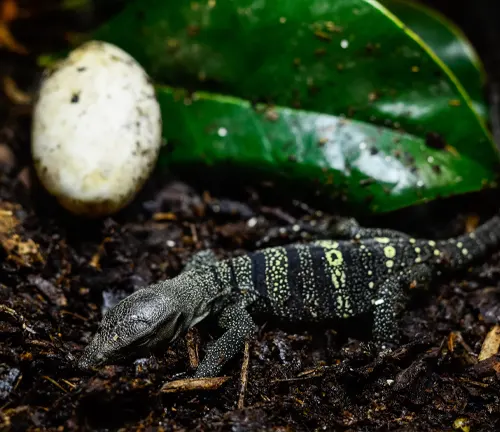
Mangrove monitors reproduce through a process known as oviparous reproduction, meaning they lay eggs rather than giving birth to live young. The reproductive behavior of these reptiles is influenced by various environmental factors, including temperature, humidity, and seasonal changes.
During the breeding season, which typically occurs in the warmer months, male mangrove monitors will actively seek out female mates. Males may engage in territorial displays and combat with rival males to establish dominance and access to breeding females.
Once a mating pair has been established, copulation occurs, with the male transferring sperm to the female. After fertilization, the female will search for a suitable nesting site to deposit her eggs. Mangrove monitors are known to dig burrows or use existing cavities in the ground to create their nests, which are typically located in sandy or loose soil near water sources.
The number of eggs laid by a female mangrove monitor can vary, with clutch sizes typically ranging from 5 to 20 eggs, depending on factors such as the female’s size and age. Once the eggs have been deposited in the nest, the female will cover them with substrate and leave them to incubate.
Incubation of the eggs takes place within the warm, humid environment of the nest, with temperatures influencing the development and hatching of the embryos. Incubation periods can vary but generally last around 6 to 8 weeks. During this time, the female may visit the nest periodically to check on the eggs and ensure they remain at optimal conditions.
Importance in Ecosystem
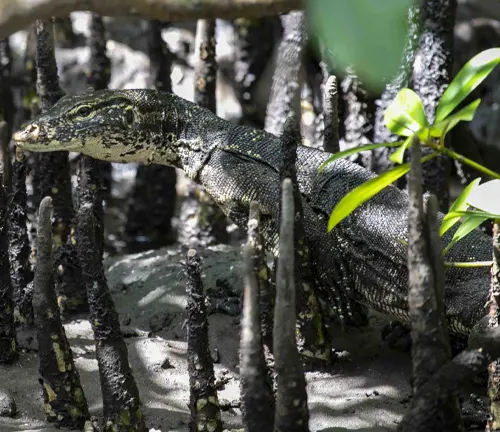
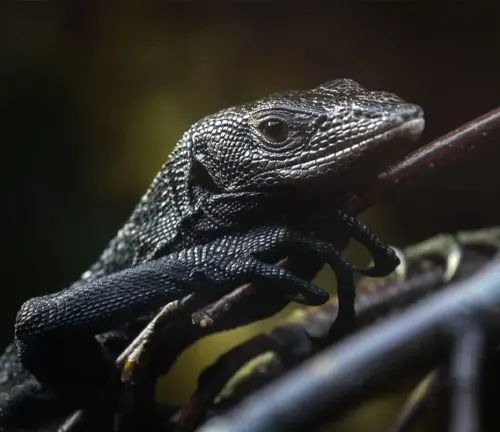
Mangrove monitors play a crucial role in maintaining the health and balance of their ecosystem, serving as apex predators within their habitat. As top-level predators, they help regulate the populations of prey species, preventing overpopulation and ensuring ecological stability.
One of the key contributions of mangrove monitors to their ecosystem is their role in controlling populations of small animals such as insects, crustaceans, and small mammals. By preying on these species, mangrove monitors help prevent their numbers from becoming too abundant, which can have cascading effects on other species within the food web.
Additionally, mangrove monitors contribute to nutrient cycling within their habitat. As scavengers, they help break down organic matter by consuming carrion and decaying plant material, which in turn releases nutrients back into the soil. This process enhances soil fertility and supports the growth of vegetation, including the mangrove trees that form the foundation of the ecosystem.
Conservation Status
The conservation status of mangrove monitors varies depending on the region and specific population. Overall, mangrove monitors are not currently classified as endangered species. However, they do face threats and challenges that warrant conservation attention.
One of the primary threats to mangrove monitors is habitat loss and degradation. Mangrove forests, which serve as their primary habitat, are increasingly being cleared or degraded due to human activities such as coastal development, urbanization, aquaculture, and deforestation. As a result, mangrove monitors are losing critical habitat, reducing their available resources and increasing their vulnerability to extinction.
Additionally, mangrove monitors are sometimes targeted by poachers for the illegal wildlife trade. These reptiles are prized for their striking appearance and are often captured and sold as exotic pets. Poaching can have significant impacts on wild populations, particularly when combined with habitat loss and other threats.
Pollution, including contamination from agricultural runoff, industrial discharge, and marine debris, poses another threat to mangrove monitors. Pollution can affect water quality, disrupt food chains, and accumulate in the tissues of these reptiles, leading to health problems and reproductive issues.
Climate change is also emerging as a potential threat to mangrove monitors and their habitat. Rising temperatures, sea level rise, and changes in precipitation patterns can alter the structure and distribution of mangrove forests, affecting the availability of food and shelter for mangrove monitors.
Despite these challenges, conservation efforts are underway to protect mangrove monitors and their habitat. These efforts include habitat restoration, protected area management, community education and outreach, and law enforcement to combat poaching and illegal wildlife trade.
Threats to Mangrove Monitors
Mangrove monitors face several threats to their survival, primarily as a result of human activities and environmental changes. These threats include:
- Habitat Loss: One of the most significant threats to mangrove monitors is habitat loss due to deforestation, urbanization, and coastal development. Mangrove forests, which are their primary habitat, are being cleared to make way for agriculture, aquaculture, infrastructure projects, and human settlements. As their habitat diminishes, mangrove monitors lose crucial resources for foraging, nesting, and shelter, leading to population declines.
- Pollution: Pollution from agricultural runoff, industrial discharge, sewage, and marine debris poses a threat to mangrove monitors and their habitat. Contaminants such as heavy metals, pesticides, and plastics can accumulate in the water and sediment, affecting water quality and harming the health of mangrove monitors and their prey. Pollution can also disrupt food chains and ecosystem functions, further impacting mangrove monitor populations.
- Hunting and Poaching: Mangrove monitors are often targeted by hunters and poachers for their skin, meat, and as pets for the exotic pet trade. Despite legal protections in some areas, illegal hunting and poaching continue to threaten wild populations. Overexploitation can lead to population declines and disrupt natural ecological processes.
- Climate Change: Climate change poses a growing threat to mangrove monitors and their habitat. Rising temperatures, changing precipitation patterns, and sea-level rise can alter the structure and distribution of mangrove forests, affecting the availability of suitable habitat and prey. Climate-related disturbances such as storms, droughts, and flooding can also impact mangrove monitor populations directly by causing mortality or habitat destruction.
- Invasive Species: The introduction of invasive species, such as predatory animals and competitive plants, can threaten mangrove monitor populations by altering ecosystem dynamics and outcompeting native species for resources. Invasive predators may prey on mangrove monitors or their eggs, whi
Conservation Efforts
Conservation efforts aimed at protecting mangrove monitors and their habitats are crucial for ensuring their long-term survival. These efforts involve a range of strategies and initiatives focused on habitat preservation, research, education, and community engagement. Some key conservation efforts include:
- Habitat Preservation: Protecting and preserving mangrove habitats is essential for safeguarding the populations of mangrove monitors. This includes establishing and managing protected areas, such as national parks, marine reserves, and wildlife sanctuaries, where mangrove ecosystems and their inhabitants are afforded legal protection from destructive activities such as logging, development, and pollution.
- Research and Monitoring: Conducting scientific research and monitoring programs helps to improve our understanding of mangrove monitor ecology, behavior, population dynamics, and threats. This information is essential for informing conservation planning and management decisions, identifying priority areas for protection, and evaluating the effectiveness of conservation interventions over time.
- Community Engagement: Engaging local communities living near mangrove habitats is crucial for promoting conservation awareness and fostering stewardship of natural resources. Community-based conservation initiatives involve working collaboratively with local stakeholders to develop sustainable livelihoods, alternative income-generating activities, and conservation incentives that support mangrove conservation efforts while addressing the needs and aspirations of local communities.
- Law Enforcement: Enforcing wildlife protection laws and regulations is essential for combating illegal hunting, poaching, and trade in mangrove monitors and their products. Strengthening law enforcement capacity, enhancing patrolling and surveillance efforts, and implementing penalties for wildlife crimes are critical components of effective conservation enforcement strategies.
- Habitat Restoration: Restoring degraded mangrove habitats through reforestation, habitat rehabilitation, and ecosystem restoration projects can help recover lost habitats and improve habitat quality for mangrove monitors and other species. Restored mangrove ecosystems provide essential ecosystem services, such as coastal protection, carbon sequestration, and nursery habitat for marine life.
- Education and Awareness: Educating the public, policymakers, and stakeholders about the importance of mangrove monitors and their habitats is vital for garnering support for conservation efforts. Educational programs, outreach activities, and awareness campaigns raise awareness about the ecological value of mangrove ecosystems, the threats they face, and the actions needed to conserve them for future generations.
Interactions with Humans
Mangrove monitors, like many wildlife species, have various interactions with humans, both positive and negative. Understanding these interactions is crucial for promoting coexistence and minimizing conflicts. Some key aspects of mangrove monitor interactions with humans include:
- Ecotourism and Education: Mangrove monitors can be a source of ecotourism and educational opportunities for local communities and visitors. Guided tours, wildlife viewing, and educational programs can provide opportunities for people to learn about mangrove ecosystems and their inhabitants, including mangrove monitors. Responsible ecotourism can generate revenue for local economies while promoting conservation awareness and appreciation for wildlife.
- Conflict with Pets and Livestock: Mangrove monitors may occasionally come into conflict with domestic pets and livestock, particularly in areas where human development encroaches on their natural habitat. Dogs and cats may harass or prey on mangrove monitors, while livestock grazing in mangrove areas can degrade habitat quality and compete with native wildlife for resources. Implementing measures to prevent conflicts, such as securing pets and managing livestock grazing, can help reduce negative interactions between mangrove monitors and domestic animals.
- Poaching and Illegal Wildlife Trade: Mangrove monitors are sometimes targeted by poachers for the illegal wildlife trade, where they are captured and sold as exotic pets or for their skins and body parts. Poaching poses a significant threat to wild populations, as it can lead to population declines and disrupt natural ecological processes. Enforcing wildlife protection laws, implementing anti-poaching measures, and raising awareness about the consequences of wildlife trafficking are essential for combating illegal wildlife trade and protecting mangrove monitors.
- Habitat Destruction and Fragmentation: Human activities such as deforestation, urbanization, and coastal development can result in habitat destruction and fragmentation, reducing the availability of suitable habitat for mangrove monitors. Habitat loss and fragmentation can isolate populations, increase their vulnerability to threats, and limit their ability to disperse and find mates. Conservation efforts aimed at preserving and restoring mangrove habitats are essential for maintaining connectivity and supporting healthy populations of mangrove monitors.
- Rescue and Rehabilitation: In some cases, mangrove monitors may require rescue and rehabilitation due to injury, illness, or displacement from their natural habitat. Wildlife rehabilitation centers and organizations may provide care for injured or orphaned mangrove monitors, with the goal of releasing them back into the wild once they have recovered. These efforts help mitigate the impacts of human-related threats and promote the welfare of individual animals.
Different Species
Spiny-necked Monitor
(Varanus spinulosus)
Found in various habitats across Southeast Asia, including mangrove forests, this species is known for the spiny projections along its neck and back.
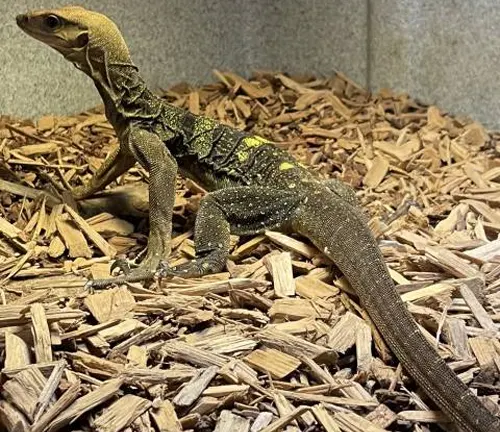
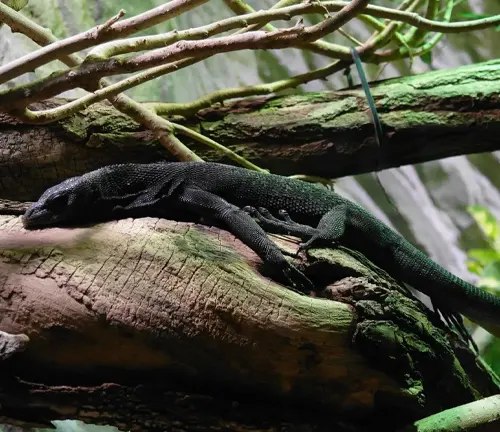
Black Tree Monitor
(Varanus beccarii)
Indigenous to the rainforests and mangrove swamps of New Guinea, this species is arboreal and is often found in trees rather than on the ground.
Yellow Monitor
(Varanus flavescens)
Native to Indonesia, particularly on the islands of Sulawesi and Halmahera, this species inhabits a variety of habitats, including mangrove forests and coastal areas.
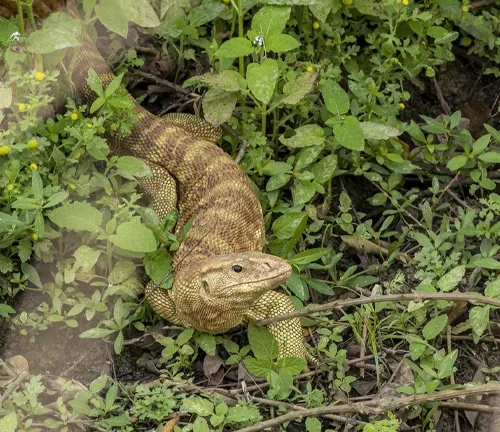
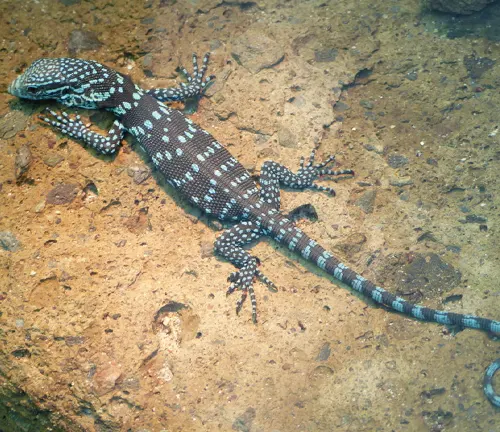
Blue-spotted Tree Monitor
(Varanus macraei)
Endemic to the island of Batanta in Indonesia, this species is arboreal and is often found in coastal mangrove forests.
Ridge-tailed Monitor
(Varanus acanthurus)
While not typically associated with mangrove habitats, some subspecies of this monitor, such as the Mangrove Monitor (Varanus acanthurus acanthurus), can occasionally be found in coastal regions and may venture into mangrove areas.
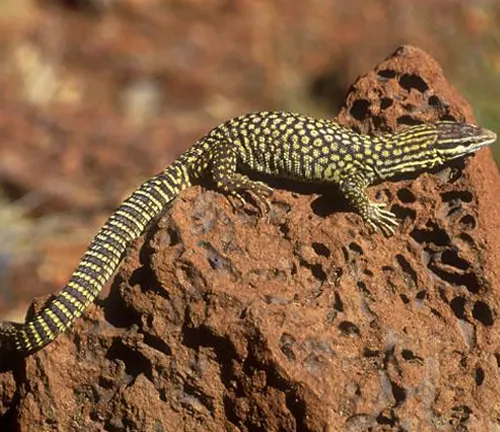
Frequently Asked Questions (FAQs)
- What is the lifespan of a mangrove monitor?
Mangrove monitors have a lifespan of around 10 to 20 years in captivity, but this can vary depending on factors such as diet, habitat conditions, and overall care. - Do mangrove monitors require special housing?
Yes, mangrove monitors require large enclosures with ample climbing opportunities, hiding spots, and access to water for swimming. Providing a naturalistic environment that mimics their wild habitat is essential for their well-being. - Are mangrove monitors legal to own as pets?
Laws and regulations regarding the ownership of mangrove monitors vary by region. It’s important to research and comply with local laws before acquiring one as a pet, as they may be protected or restricted in certain areas. - How do you handle a mangrove monitor safely?
Handling mangrove monitors should be done with care and respect for their natural behavior. It’s best to approach them calmly and avoid sudden movements to prevent stress or aggression. Supporting their body properly and avoiding their sharp claws and teeth is essential for safe handling. - Do mangrove monitors require UVB lighting?
Yes, UVB lighting is essential for the health of mangrove monitors, as it helps them metabolize calcium and prevents metabolic bone disease. Providing a UVB light source in their enclosure is crucial for their overall well-being. - How often should mangrove monitors be fed?
Mangrove monitors should be fed a varied diet consisting of appropriately sized prey items several times a week. Juveniles may require more frequent feedings, while adults can be fed less often. - Can mangrove monitors be housed together?
While mangrove monitors are solitary animals in the wild, they may be housed together in large enclosures under certain conditions. However, territorial aggression can occur, so careful monitoring and providing adequate space and resources are necessary. - What are the signs of illness in mangrove monitors?
Signs of illness in mangrove monitors may include lethargy, loss of appetite, abnormal feces, respiratory symptoms, or visible injuries. Regular health check-ups by a veterinarian experienced with reptiles are recommended to detect and treat any health issues promptly. - How can I enrich the environment for my mangrove monitor?
Enriching the environment for mangrove monitors involves providing opportunities for natural behaviors such as climbing, digging, basking, and swimming. Adding branches, rocks, hiding spots, and environmental stimuli can help keep them mentally and physically stimulated. - Are mangrove monitors good for educational programs or exhibits?
Mangrove monitors can be educational animals in zoos, nature centers, or educational programs, as they offer opportunities to teach about reptile behavior, ecology, and conservation. However, they require specialized care and handling by trained professionals.



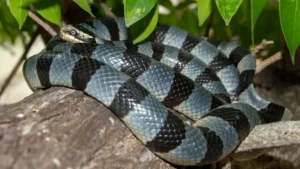
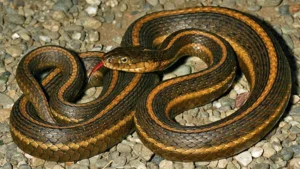
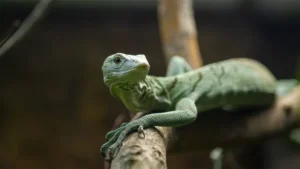

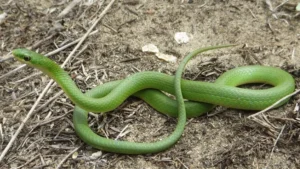
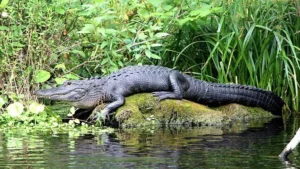
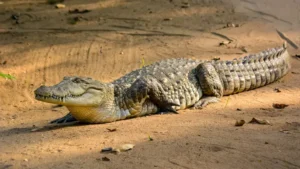

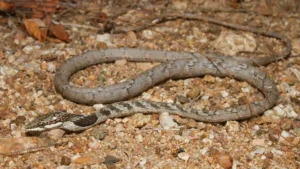

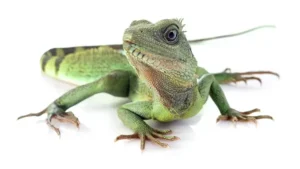
Leave your comment